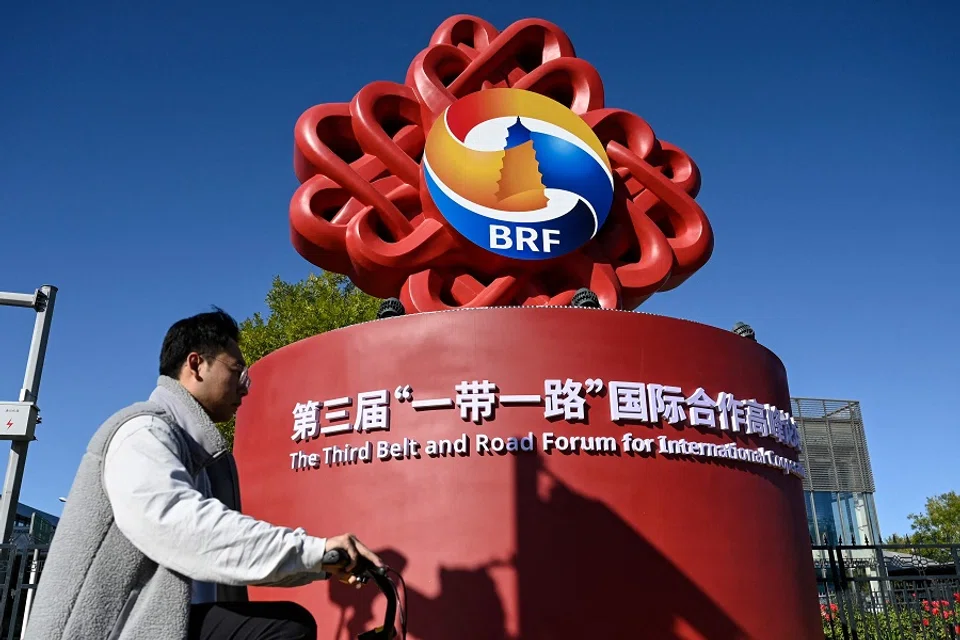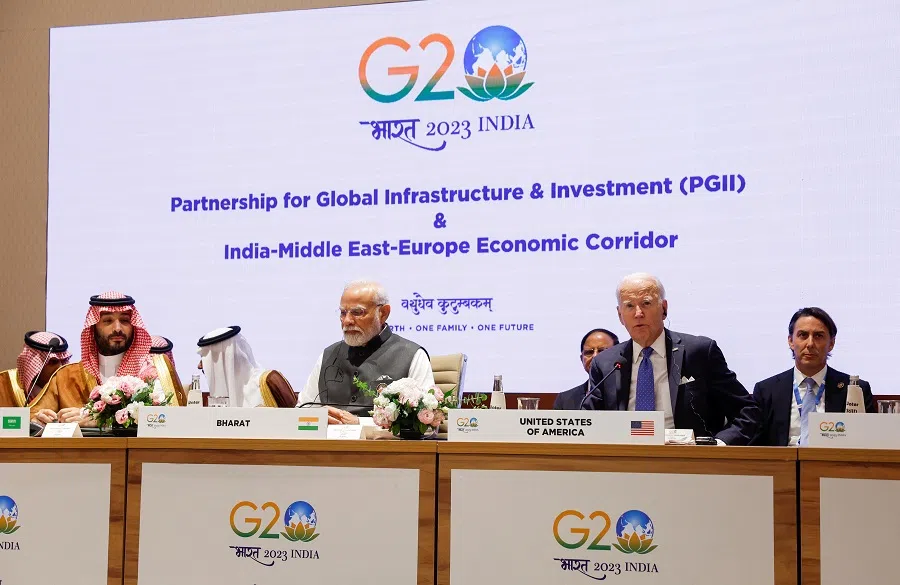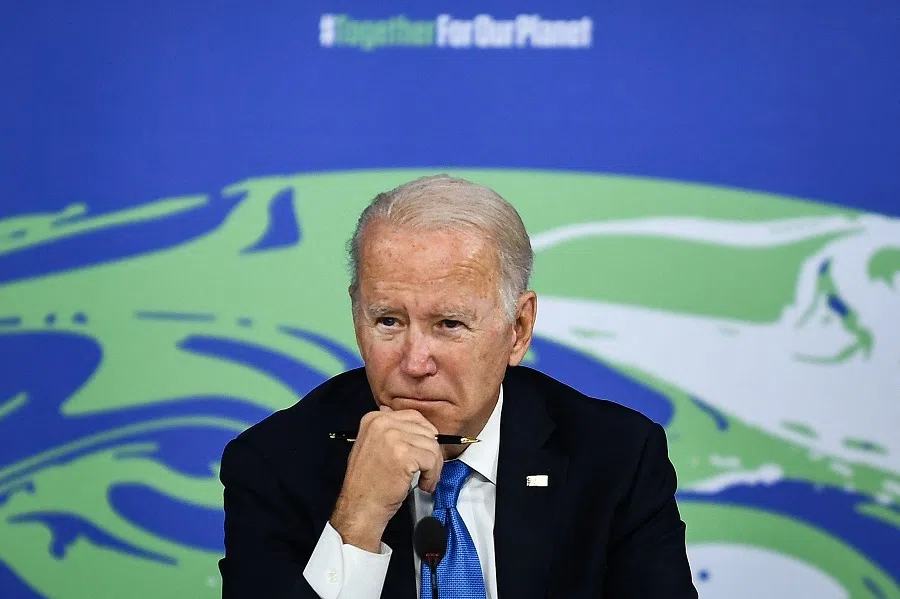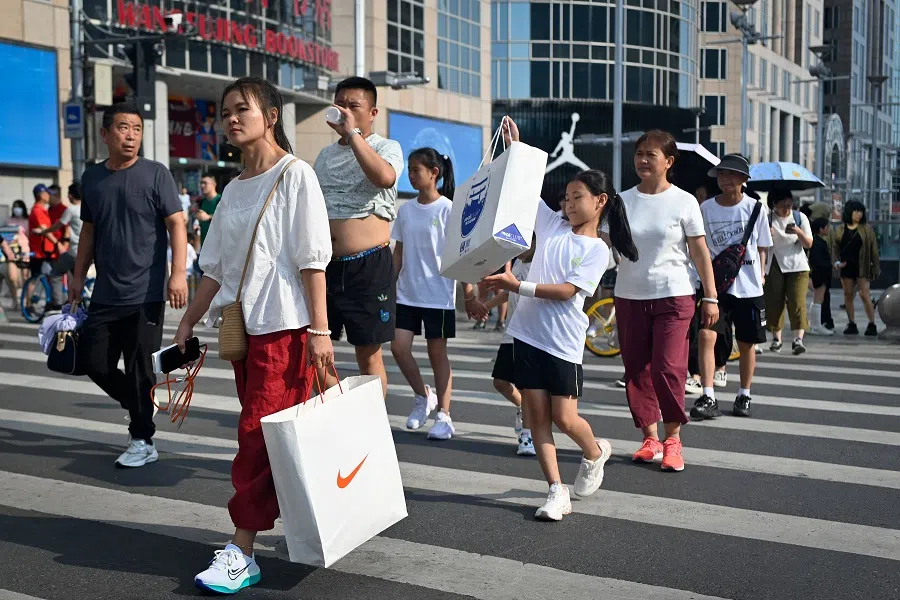Ten years of the BRI: Raising China's speaking rights amid geopolitical and debt risks
While China promotes its BRI to developing countries, these countries are often at risk of a poor economy, political instability and other domestic problems. This means that even as China's influence is growing, the final result may be less than ideal, says Lianhe Zaobao journalist Miao Zong-Han.

In March 2013, Chinese Communist Party (CCP) General Secretary Xi Jinping took office as Chinese president. In early September of that year, on a visit to Kazakhstan, the largest country in Central Asia, he raised the idea of the Silk Road Economic Belt. A month later, in a speech at the Indonesian parliament, he proposed the concept of building the Maritime Silk Road.
These two proposals became jointly known as the Belt and Road Initiative (BRI), which was established as a national strategy at the third plenary session of the 18th Central Committee of the CCP in November that year.
At the time, it was generally agreed that China proposed this initiative to solve the problems caused by rapid economic expansion, such as overcapacity, excess inventory and rising labour costs.
Associate Professor Chen Chien-fu of the Graduate Institute of China Mainland Studies at Tamkang University and director of the institute's Center of China Belt Road Initiative Studies told Lianhe Zaobao that other countries were initially not too concerned with the BRI; however, following the official opening of the Chinese-backed Asian Infrastructure Investment Bank in 2016, which finances infrastructure projects, the BRI began to attract attention.
Over the past decade, the BRI has indeed played a significant role in promoting infrastructure in developing countries.

ASEAN Briefing, a website that follows business, trade, regulatory and investment news and data in ASEAN countries, pointed out in an August 2023 report that the Boten-Vientiane railway inaugurated in 2021 can transform the infrastructure-poor Laos into a logistics hub for Southeast Asia.
The 1,035-kilometre railway links China's Kunming, the capital of Yunnan province, with the Lao capital Vientiane. Since the BRI was proposed in 2013, it is the first international railway constructed using Chinese investment which follows Chinese railway technical standards, uses Chinese equipment, and is directly connected with the Chinese railway network. Travel time from Vientiane to the China-Laos border has been shortened to three hours, and one can even arrive in Kunming on the same day.
China also plans to extend this railway to Thailand, Malaysia and Singapore in the future.
In addition, the Jakarta-Bandung high-speed railway, a joint venture between China and Indonesia, began operations on 2 October. At 142 kilometres long with a maximum design speed of 350 kilometres per hour, the high-speed railway also uses Chinese technology and standards, and is another landmark project under the BRI.
"If it was not successful, there would not be nearly 100 national leaders willing to attend the BRI conference in Beijing, nor would it arouse the attention and response of Western countries." - Chen Chien-fu, Associate Professor, Tamkang University

According to official statistics released by the People's Daily in June, China has signed Belt and Road cooperation documents with over 150 countries. From 2013 to 2022, China's trade in goods with countries along the BRI also grew from US$1 trillion to US$2 trillion, with an average annual growth rate of 8%.
Based on the past decade of development, Chen thinks the BRI can be considered a successful infrastructure project. "If it was not successful, there would not be nearly 100 national leaders willing to attend the BRI conference in Beijing, nor would it arouse the attention and response of Western countries."
Geopolitical risks and debt issues
Chen pointed out that the advantage of China's "whole nation" system lies in the fact that state-owned enterprises will rush to invest in the BRI at the command of the government. In comparison, democratic countries in Europe and the US are unable to force enterprises to make foreign investments, reducing their infrastructure plans to mere empty talk. This difference has also significantly strengthened China's influence on international discourse over the past decade.
However, Associate Professor Roger Liu Chi-feng of the Department of Social Sciences at India's FLAME University told Lianhe Zaobao in an interview that while numerous countries participating in the BRI are key countries in geopolitics, and China is interested in cooperating with them, these countries are plagued with political and economic problems, exposing China to problems such as political changes and debt risks.
... Western countries call China's use of overseas lending to promote infrastructure projects in countries along the BRI a "debt trap".

Taking Pakistan as an example, he explained, "Due to its [Pakistan] important geostrategic location, the China-Pakistan Economic Corridor will certainly benefit China. But the chaotic situation between Pakistan, India, and Afghanistan actually puts a lot of pressure on China as well."
Also, China's aggressive investments have also cast doubt on the fact that a massive number of Chinese-funded enterprises have been implicitly interspersed in the industrial chain of the countries receiving the investments, and in fact dominate the development of these investment projects, which hinders these countries from creating more economic benefits from the infrastructure projects themselves.
Since it takes a long time for infrastructure projects to see benefits, the massive funds invested in the projects quickly turn into debt. Thus, Western countries call China's use of overseas lending to promote infrastructure projects in countries along the BRI a "debt trap".
For example, as Sri Lanka is mired in debt, it had to lease its strategic port of Hambantota and about 15,000 acres of land nearby to China for 99 years in 2017.
... the share of debt held by the US among major creditor countries fell to 2.4%, while China's soared to 30.4%.

Laos, which has a GDP of less than US$20 billion, is shouldering a debt of over US$1.4 billion due to the construction of the Boten-Vientiane railway. Hence, it handed over part of its energy network for US$600 million in September 2020 to seek debt relief from its Chinese creditors.
A report released in March by the World Bank, Harvard Kennedy School, AidData (a research lab at William & Mary's Global Research Institute), and Kiel Institute for the World Economy showed that China spent US$240 billion bailing out 22 developing countries between 2008 and 2021.
The report pointed out that in recent years, an increasing number of borrower countries have been unable to repay their debts as scheduled, forcing Beijing to provide more bailouts to countries in debt crises to help them continue repaying existing loans.
This series of debt issues has somewhat made China the world's largest creditor. In the five years between 2016 and 2021, the share of debt held by the US among major creditor countries fell to 2.4%, while China's soared to 30.4%.
While this does mean that China's influence and status has grown further, amid factors such as the pandemic and rise in commodity prices as a result of the Russia-Ukraine war, debtor nations are demanding debt relief. This probably bodes ill for China, which is facing an economic slowdown.

Li Mingjiang, an associate professor at the Rajaratnam School of International Studies at Nanyang Technological University, said in an interview that while it is somewhat exaggerated to claim that China's BRI is a "debt trap", the BRI has indeed created a debt burden for participating countries.
He explained that this is because in the early years of the BRI, China had failed to thoroughly consider the investment feasibility of financing some large-scale infrastructure projects, as well as their actual economic benefits, and the long-term consequences on the country's finances.
Li added that quite a number of countries already have problems with balancing finances, which are further exacerbated by BRI projects.
Limited effect of West's containment of BRI
Apart from debt risks, the BRI is also facing containment by the West.
For example, since 2019, the US has been proposing a series of infrastructure projects such as the Blue Dot Network, the Indo-Pacific Economic Framework, the Partnership for Global Infrastructure and Investment and Build Back Better World.
At the G20 summit held in New Delhi in September this year, the US, Saudi Arabia, India, the United Arab Emirates, France, Germany and Italy jointly signed an agreement to establish a new India-Middle East-Europe Economic Corridor connecting the Middle East and South Asia via railways and ports to strengthen the connectivity and economic integration between Asia, the Arabian Gulf and Europe.
... rather than calling it containment of China's BRI, it is more accurate to say the US is just seizing the opportunity to propose a plan that can rival China's, and give developing countries an alternative.

Liu pointed out that when the BRI was first launched, Western countries did not pay much attention to it or see it as a threat; they even wanted to cooperate on it at one point. It was not until Donald Trump became US president and the China-US trade war broke out that the West began to see the BRI as a threat.
However, Liu thinks that the US has not been very effective in implementing infrastructure projects over the past few years; rather than calling it containment of China's BRI, it is more accurate to say the US is just seizing the opportunity to propose a plan that can rival China's, and give developing countries an alternative.
He assessed that when it comes to China, the US is still focused on containment of key technology, and to raise awareness of the China threat among its regional allies, dispersing the pressure of regional containment to India, Japan, Australia and other Indo-Pacific countries.
On the other hand, Li said that whether it is China, the US, Japan or European countries that are willing to launch infrastructure projects, it would be beneficial to the long-term economic development of developing countries. So, participating in the BRI and the Western-led projects is not mutually exclusive, and there are benefits to be reaped from both sides.
However, he observed that most developing countries are generally more positive about the BRI; in comparison, while Western countries have also proposed numerous projects, few are fulfilled and actually realised, and so the actual geopolitical effect is limited.

Chen also mentioned that China's infrastructure capabilities are quite mature and its influence has not declined as much as thought. Despite its economic slowdown, the country is still able to hold its own against Europe, the US and Japan.
Taking Africa as an example, Chen added that it would be difficult for the US's aid programmes to attract the participation of African countries if they still emphasise Western values such as liberal democracy. "In such times, China's influence far surpasses that of the US."
As for whether India's efforts to improve its infrastructure would affect the BRI's development in South Asia, Liu said that while India is certainly the biggest objector to the BRI in South Asia, it generally only uses its veto power in the region to block the BRI. When it comes to infrastructure capabilities, India is still building its own infrastructure and lacks resources for external expansion.
... China is indeed shrinking the scale of its BRI projects in recent years; at least, it is not as high profile as it was in the first few years of its launch.
Transformation of the BRI
However, with the impact of the pandemic and economic slowdown, other countries are increasingly convinced that China will begin to scale down its BRI projects.
The Wall Street Journal reported that Natixis analysed data from Mergermarket and the American Enterprise Institute, and found that China's average annual outward foreign-direct investment (FDI) fell 72% in 2020-2021 from 2015-2019 average levels, while China's FDI in BRI countries fell by 62%.
Li noted that China is indeed shrinking the scale of its BRI projects in recent years; at least, it is not as high profile as it was in the first few years of its launch. This is partly due to the fact that some of the initial investment decisions in the BRI were made too hastily. At the same time, China's current economic situation would also prompt Beijing to adjust the scale of its BRI plan.

He believes that the Chinese government will need to focus its attention, resources and wealth on solving its economic and social problems in coming years, which would likely turn the BRI towards smaller and more focused projects.
On the other hand, Liu predicts that China will not give up on the BRI because of its economic slowdown but will instead push for the transformation of the BRI.
He thinks that China will reduce its investments in regions with political instability or high debt risks, but continue to inject resources for the infrastructure development of key regions with stable development, such as Southeast Asia, which would also bring greater benefits.
Liu pointed out that China has also begun to leverage outside resources by integrating the BRI with multilateral economic mechanisms such as the Regional Comprehensive Economic Partnership and the BRICS to help regional partners play a more important role in this area.
He added that, as China hopes to carve its own path amid the US's technological containment, it is likely to transform the BRI into a plan that is more aligned with the development of today's world. For example, it previously launched the "Green BRI" and "Digital Silk Road", and could perhaps touch on fields such as technology or carbon reduction next.
This article was first published in Lianhe Zaobao as "一带一路10年提升中国话语权 却陷地缘政治与债务风险".





![[Big read] China’s 10 trillion RMB debt clean-up falls short](https://cassette.sphdigital.com.sg/image/thinkchina/d08cfc72b13782693c25f2fcbf886fa7673723efca260881e7086211b082e66c)